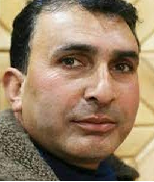Are we supporting children or suppressing them? Children’s Day, in particular, provides a reality check. This day’s celebration leaves a lot to be desired although it is marked by lofty speeches with respect to children’s welfare and future. There is a dire need to come up with certain practical measures and safeguards for the welfare of children and thus to make “Children’s Day” celebration a meaningful occasion.
Observing Children’s Day every year underscores the importance which children merit in our life. But do we put words into action and work for a child’s rights in real life situations? If a professional teacher cultivates a fear- free and motivating classroom situation for children at school, this is upholding of their human rights. And the honest observation of Children’s Day in essence!
Celebrated across India on 14 November every year on the birthday of the First Prime Minister of Independent India Pundit Jawaharlal Nehru –famed for his fondness of children — the red letter day ostensibly provides education about the rights and welfare of children. Just making bombastic , monotonous and emotional speeches concerning children to force the latter to listen in all circumstances , makes little sense; allowing children to speak freely as to their needs, desires , issues and challenges — should be the primary objective of the Children’s Day. But unfortunately, we end up in speechifying instead of allowing children to speak their heart on this day– atleast.
The government of Jammu and Kashmir deserves appreciation for arranging various activities on the day; educational institutions included. However, there is more than meets the eye about children, our future .The sight of child labor is a painful scenario visible everywhere with deep roots. Found more or less the world over, child labour in Jammu and Kashmir calls for the rigorous application of the law book.
Despite the existence of many strict laws against child labor, child workers are seen anywhere; hundreds of minor children can be seen doing manual labor in Dhabas, restaurants, railway stations; working as drivers/ conductors and construction workers; pruning apple trees, picking apple fruit , carrying apple boxes and doing other hazardous tasks for — a few rupees.
According to the United Nations, there are an estimated 152 million children in child labor; 72 million among them are in hazardous work. In the least developed countries, more than one in four children (ages 5-17) are engaged in labor seen as detrimental to their health and development. Africa ranks highest among regions of the number of children in child labor with the figures standing at 72 million. Asia and the pacific ranks second highest – 7% of all children and 62 million in total are in child labor in the region.
The 2011 census counted 250103 child labourers in the state of Jammu and Kashmir. If the study on the number of orphans here involved in menial jobs is not wrong , then 43% of the child population of 26,53,422 i.e., 11,40,971 children are working in J&K which is far more than the figure of 1,75,630 child laborers of census 2001. According to a report on child labor in J&K, there are more than one lakh child laborers here, most of whom work in the handcraft sector, automobile workshops, brick kilns, in agriculture and as domestic servants in homes; thousands of children here are seen working as vendors, bus conductors and auto drivers.
Arguably, it is extreme poverty — in the majority of cases — which pushes children into the bottomless pit of child labor, eating their health and snatching their right to education. And even if they continue education while working, these children fail to attend schools punctually and regularly. Parents cite various reasons for sending their children for doing labor. The reasons range from poverty, acquisition of skills, and lack of quality education down to the inaccessibility of schools.
While these are valid and sound reasons for parents to see their children working when they should be at school, it is noteworthy that the parents cannot scapegoat the education, health and happiness of their children for a few rupees: as parents, it is their obligation and moral responsibility to look after their children well and ensure that they do not imprison themselves in illiteracy or miss schooling.
Children can be engaged in doing tasks which are not harmful to them but forcing them to do hazardous work at the cost of their physical, mental and moral health is against the principles of child care and human rights. Many child laborers have suffered serious injuries: recently, a minor child laborer fell off an apple tree while picking apples; he broke his left arm and had a serious knee injury.
Consequently, he lost both education and days of playing (which is essential for his psychological and physical development).Though no child would be happy to work as a laborer, it is the abject financial position, backwardness and low educational awareness of people in an area which have pushed children towards labor. Preventing child labor —that is stopping minor children from hazardous work —is possible if both the society and state work together. But if they address it separately, a collision course is likely.
Parents, teachers and preachers can play a key role in combating child labor; they can take care of a child’s health and education. Let this Children’s day inject a dose of commitment and courage in the entire society, enabling us to lift children out of the bottomless pit of labour and exploitation. Lending an understanding ear to children and working sincerely to address their challenges in or outside their classrooms will be a real Children’s Day. But all talk minus action is just another wild goose chase.
(Author is RK columnist and teacher by profession. Feedback: [email protected])








